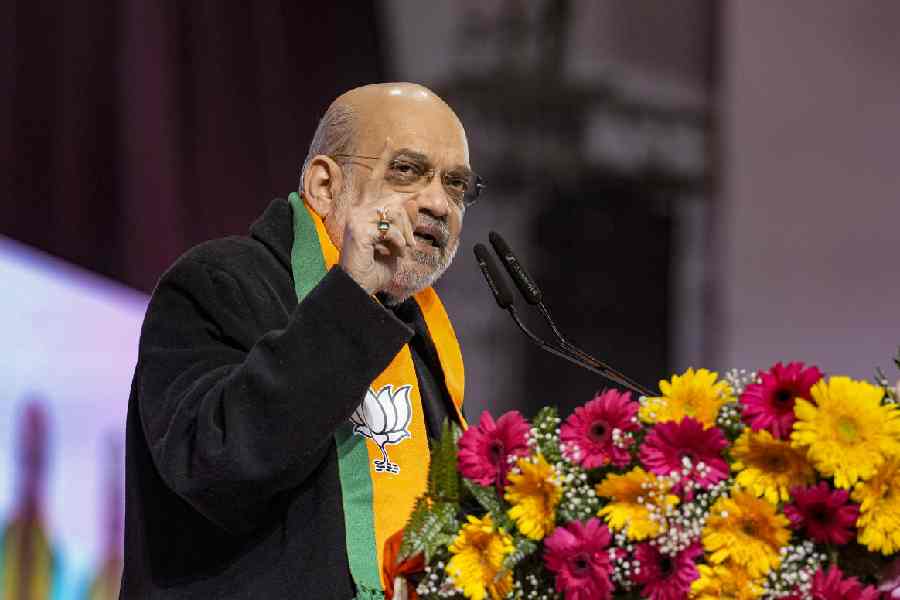Nations have delayed curbing their fossil-fuel emissions for so long that they can no longer stop global warming from intensifying over the next 30 years, though there is still a short window to prevent the most harrowing future, a major new United Nations scientific report has concluded.
Humans have already heated the planet by roughly 1.1 degrees Celsius, or 2 degrees Fahrenheit, since the 19th century, largely by burning coal, oil and gas for energy. And the consequences can be felt across the globe: This summer alone, blistering heat waves have killed hundreds of people in the United States and Canada, floods have devastated Germany and China, and wildfires have raged out of control in Siberia, Turkey and Greece.
But that’s only the beginning, according to the report, issued Monday by the Intergovernmental Panel on Climate Change, a body of scientists convened by the United Nations. Even if nations started sharply cutting emissions today, total global warming is likely to rise to around 1.5 degrees Celsius within the next two decades, a hotter future that is now essentially locked in.
At 1.5 degrees of warming, scientists have found, the dangers grow considerably. Nearly 1 billion people worldwide could swelter in more frequent life-threatening heat waves. Hundreds of millions more would struggle for water because of severe droughts. Some animal and plant species alive today will be gone. Coral reefs, which sustain fisheries for large swaths of the globe, will suffer more frequent mass die-offs.
“We can expect a significant jump in extreme weather over the next 20 or 30 years,” said Piers Forster, a climate scientist at the University of Leeds and one of hundreds of international experts who helped write the report. “Things are unfortunately likely to get worse than they are today.”
Not all is lost, however, and humanity can still prevent the planet from getting even hotter. Doing so would require a coordinated effort among countries to stop adding carbon dioxide to the atmosphere by around 2050, which would entail a rapid shift away from fossil fuels starting immediately, as well as potentially removing vast amounts of carbon from the air. If that happened, global warming would probably halt and level off at around 1.5 degrees Celsius, the report concludes.
But if nations fail in that effort, global average temperatures will keep rising — potentially passing 2 degrees, 3 degrees or even 4 degrees Celsius, compared with the preindustrial era. The report describes how every additional degree of warming brings far greater perils, such as ever more vicious floods and heat waves, worsening droughts and accelerating sea-level rise that could threaten the existence of some island nations. The hotter the planet gets, the greater the risks of crossing dangerous “tipping points,” like the irreversible collapse of the immense ice sheets in Greenland and West Antarctica.
“There’s no going back from some changes in the climate system,” said Ko Barrett, a vice-chair of the panel and a senior adviser for climate at the National Oceanic and Atmospheric Administration. But, she added, immediate and sustained emissions cuts “could really make a difference in the climate future we have ahead of us.”
The report, approved by 195 governments and based on more than 14,000 studies, is the most comprehensive summary to date of the physical science of climate change. It will be a focal point when diplomats gather in November at a U.N. summit in Glasgow, Scotland, to discuss how to step up their efforts to reduce emissions.
A growing number of world leaders, including President Joe Biden, have endorsed the goal of limiting global warming to 1.5 degrees Celsius, though current policies in the major polluting countries are still far off track from achieving that target. The 10 biggest emitters of greenhouse gases are China, the United States, the European Union, India, Russia, Japan, Brazil, Indonesia, Iran and Canada.
The new report leaves no doubt that humans are responsible for global warming, concluding that essentially all of the rise in global average temperatures since the 19th century has been driven by nations burning fossil fuels, clearing forests and loading the atmosphere with greenhouse gases like carbon dioxide and methane that trap heat.
The changes in climate to date have little parallel in human history, the report said. The last decade is quite likely the hottest the planet has been in 125,000 years. The world’s glaciers are melting and receding at a rate “unprecedented in at least the last 2,000 years.” Atmospheric levels of carbon dioxide have not been this high in at least 2 million years.
Ocean levels have risen 8 inches on average over the past century, and the rate of increase has doubled since 2006. Heat waves have become significantly hotter since 1950 and last longer in much of the world. Wildfire weather has worsened across large swaths of the globe. Bursts of extreme heat in the ocean — which can kill fish, seabirds and coral reefs — have doubled in frequency since the 1980s.
In recent years, scientists have also been able to draw clear links between global warming and specific severe weather events. Many of the deadly new temperature extremes the world has seen — like the record-shattering heat wave that scorched the Pacific Northwest in June — “would have been extremely unlikely to occur without human influence on the climate system,” the report says. Greenhouse gas emissions are noticeably making some droughts, downpours and floods worse.
Tropical cyclones have probably become more intense over the past 40 years, the report said, a shift that cannot be explained by natural variability alone.
If nations follow through on more recent promises — like Biden’s April pledge to eliminate America’s net carbon emissions by 2050 or China’s vow to become carbon neutral by 2060 — then something closer to 2 degrees Celsius of warming might be within reach. Additional action, such as sharply reducing methane emissions from agriculture and oil and gas drilling, could help limit warming below that level.
“The report leaves me with a deep sense of urgency,” said Jane Lubchenco, deputy director of the White House Office of Science and Technology Policy. “Now is the critical decade for keeping the 1.5 target within reach.”
New York Times News Service











